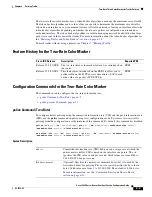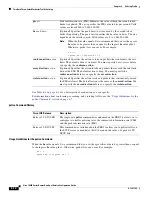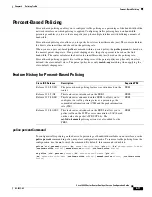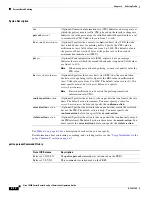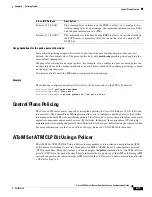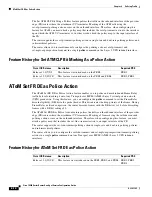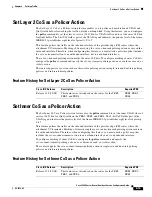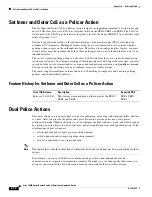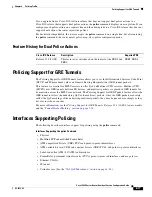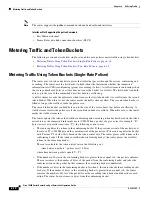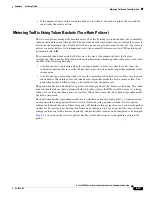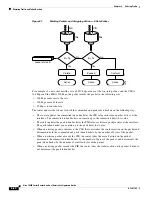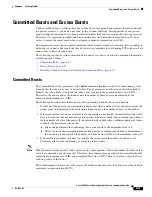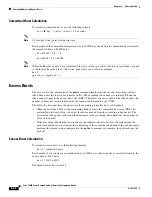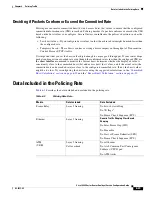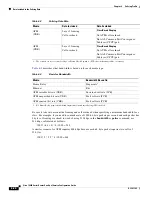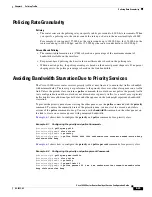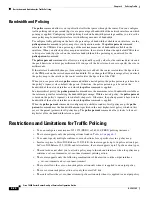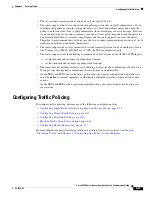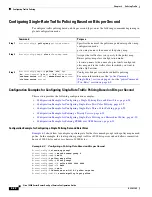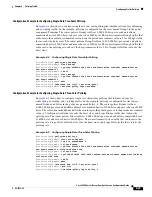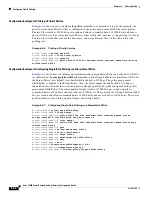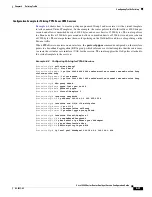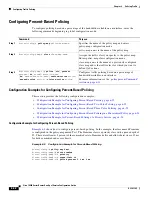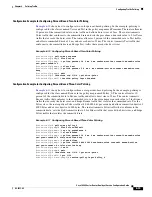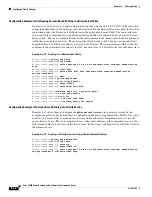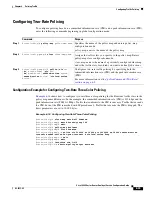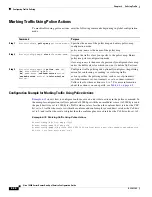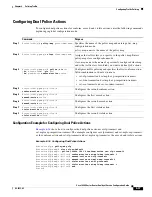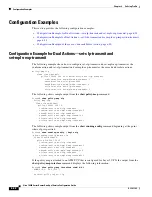
6-23
Cisco 10000 Series Router Quality of Service Configuration Guide
OL-7433-09
Chapter 6 Policing Traffic
Data Included in the Policing Rate
Deciding if Packets Conform or Exceed the Committed Rate
Policing uses normal or committed burst (bc) and excess burst (be) values to ensure that the configured
committed information rate (CIR) is reached. Policing decides if a packet conforms or exceeds the CIR
based on the burst values you configure. Several factors can influence the policer’s decision, such as the
following:
•
Low burst values—If you configure burst values too low, the achieved rate might be much lower than
the configured rate.
•
Temporary bursts—These bursts can have a strong adverse impact on throughput of Transmission
Control Protocol (TCP) traffic.
It is important that you set the burst values high enough to ensure good throughput. If your router drops
packets and reports an exceeded rate even though the conformed rate is less than the configured CIR, use
the
show interface
command to monitor the current burst, determine whether the displayed value is
consistently close to the committed burst (bc) and excess burst (be) values, and if the actual rates (the
committed rate and exceeded rate) are close to the configured committed rate. If not, the burst values
might be too low. Try reconfiguring the burst rates using the suggested calculations in the
“Committed
Burst Calculation” section on page 6-22
and the
“Excess Burst Calculation” section on page 6-22
.
Data Included in the Policing Rate
Table 6-2
describes the data included and excluded in the policing rate.
Table 6-2
Policing Rate Data
Media
Data Included
Data Excluded
Frame Relay
Layer 2 framing
No bit or byte stuffing
No 7E flags
1
No Frame Check Sequence (FCS)
Ethernet
Layer 2 framing
Generic Traffic Shaping Class-Based
Shaping
No Inter-Frame Gap (IFG)
No Preamble
No Start of Frame Delimiter (SFD)
No Frame Check Sequence (FCS)
ATM
(VBR)
Layer 2 framing
Cell overhead
No cell header
No AAL Common Part Convergence
Sublayer (CPCS) pad
No ATM trailer

